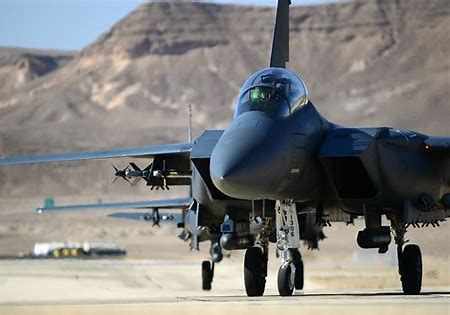
In a decisive move, the U.S. Congress is on course to prevent the retirement of the Air Force’s F-22 Raptor stealth fighter jet and mandate additional purchases of the F-15EX Eagle II. The proposed legislation would ensure the United States maintains air superiority until the Next Generation Air Dominance (NGAD) fighter jet is operational.

In a bid to preserve its air combat prowess, the U.S. Congress is pushing to block the Air Force’s plans to retire part of its F-22 Raptor fleet. The House Armed Services Committee has introduced an amendment to the Fiscal Year 2025 National Defense Authorization Act that would halt the decommissioning of the F-22, which has been the nation’s premier air superiority fighter for over two decades.

The legislation also calls for the purchase of more F-15EX Eagle II jets, despite the F-22 facing maintenance challenges due to the closure of Lockheed Martin’s production line in 2011.

The proposed bill underscores the Raptor’s unrivaled capabilities in dogfighting, stealth, and thrust vectoring, which remain crucial for maintaining air dominance.A Congressional staffer, as quoted by Defense News, highlighted the significance of the F-22, stating, “even two decades after it started entering service, the Raptor remains the best air superiority fighter in the world.”

The decision to keep the F-22 in service comes with a hefty price tag, estimated at several billion dollars. Yet, Congress deems it necessary as no other aircraft can fulfill the Raptor’s role as effectively.

The necessity of the F-22 is further evidenced by the Air Force’s predicament of spending five years repairing a single Raptor damaged during a training exercise in 2018.

The F-22’s importance is also highlighted by the Air Force’s fiscal 2025 budget request, which includes significant investment for the Raptor’s procurement and modernization.

The budget outlines a total of $7.8 billion through fiscal year 2029, with plans to reduce the fleet by 32 aircraft, retaining 142 jets that will receive a full suite of improvements.

Updates to the F-22 include stealthy drop tanks, infrared sensors, and various enhancements to its weapons, communications, navigation, pilot-vehicle interface, and electronic warfare suite.

These improvements aim to sustain the F-22’s dominance by bolstering its sensing and tracking capabilities and preserving its first-look, first-shot, and first-kill advantages.

Despite the F-22’s formidable presence, it remains a uniquely American asset, never sold to foreign countries due to concerns over safeguarding its top-secret technologies.

The decision to keep the Raptor domestically exclusive stems from prior instances where U.S. military aircraft exported abroad, like Iran’s F-14 Tomcats and Venezuela’s F-16s, were later used against American interests.

As for the oldest F-22s, if Congress approves their retirement, they are slated for long-term storage or scrapping. The Air Force has developed specific plans for the disposition of these aircraft, including potential placement in museums or as static displays.

However, this process is laden with considerations for handling the F-22’s sensitive stealth materials, setting a precedent for future retirements of advanced aircraft.

The Air Force has announced that all savings from retiring the aircraft will be used to develop the F-22’s successor, the Next Generation Air Dominance (NGAD) family of systems.
Relevant articles:
– Russia Is Mad: The Stealth F-22 Raptor Fighter Won’t Be Retired Anytime Soon, The National Interest
– F-22 Retirement in 2030 Unlikely as USAF Looks to Spend $7.8 Billion on It Before Then, airandspaceforces.com
– Why America never sold the F-22 Raptor to foreign countries, Sandboxx
– What Happens to the Air Force’s Oldest F-22s if Congress OKs Their Retirement?, Air & Space Forces Magazine

